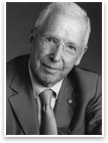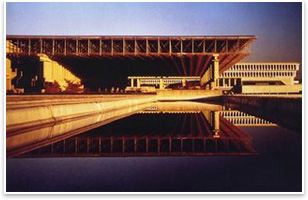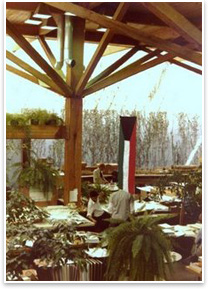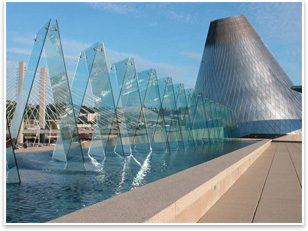 A Tribute to Arthur Erickson A Tribute to Arthur Erickson
1986 Gold Medalist dead at 84
Summary: Arthur Erickson, FAIA, who died May 20 in his home city of Vancouver after a lengthy decline in health due to Alzheimer’s and Parkinson’s diseases, “died in peace,” says nephew Geoff Erickson, “surrounded by loving family and fantastic friends from all over the world.”

“Erickson likened his competition-winning 1963 design (with Geoffrey Massey) for Simon Fraser University atop Burnaby Mountain to the Incan settlement at Machu Picchu in Peru,” writes Randy Nishimura, AIA. (Photo by Simon Scott.)
“I think we’ve lost … one of the greatest Canadians of all time, says longtime architectural colleague Bing Thom. “No Canadian architect has achieved what he has from international recognition and accolades from all over … His buildings were always very much embracing people’s aspiration … You walk out of one of Arthur’s buildings, you walk out a little taller than when you came in.”
A Modernist, inspired by Frank Lloyd Wright’s Taliesin West to pursue a career in architecture, Erickson’s focus on the context of the culture, climate, and history of a site led him to characterize himself as a landscape designer as well as architect, notes AIA Southwestern Oregon Chapter President Randy Nishimura, AIA, in his commemorative blog.

Erickson’s office in 1979. (Photo by Randy Nishimura, AIA.) “Although his work is undeniably Modernist, Erickson has always disdained the more mechanistic or rationalist strains of modernism,” writes Nishimura, who worked in Erickson’s office as a practicum student at the British Columbia Institute of Technology. “He likely has been strongly critical of the tendencies towards scenographic or ‘entertainment’ architecture [because it] lacks a purpose other than to enchant and is devoid of meaning.”
Son of Vancouver, citizen of the world
Born in Vancouver, Erickson studied Asian languages at the University of British Columbia (UBC) before joining the Canadian Army in 1943. He served in India, Ceylon, and Malaysia, achieving the rank of captain in the Canadian Intelligence Corps in 1945.
After his Wright-inspired epiphany, Erickson graduated from McGill University at the top of his class, which earned him a traveling scholarship. With the scholarship and veteran’s benefits, he toured Asia, Africa, and Europe for more than two years. On returning to Vancouver, he took a position as an associate professor at the University of British Columbia and started a firm with Geoffrey Massey.

Canadian Chancery, Washington, D.C. (Photo by SimonP from Verne Equinox.) It was in 1963, just as he left UBC, that Erickson gained international attention with his design for the Simon Fraser University campus in Burnaby, B.C. Although recognized in a good part for his works in the western parts of Canada and U.S.—such as the UBC Museum of Anthropology, University of Lethbridge in Alberta, Robson Square in Vancouver, Fresno City Hall in California, and McGaugh Hall at the University of California Irvine campus—Erickson’s work spanned the globe, including the Kuwait Oil Sector Complex in Kuwait City and the Kunlun Apartment Hotel Development in Beijing.

The Museum of Glass, Tacoma, Wash. (Undated publicity photograph.) A survivor no stranger to controversy
Canadian Prime Minister Pierre Trudeau personally selected Erickson to design the 1989 Canadian Chancery, which stands in the shadow of the U.S. Capitol in Washington, D.C., and proved to be both a controversial selection and design.
Erickson was no stranger to controversy during the recession years of the late 1980s and early ’90s, when, having accumulated a debt of $10 million and under a cloud of accusations that he was practicing without a valid architecture license in the U.S., he was forced into bankruptcy. Continuing to win major commissions, such as the Museum of Glass in Tacoma, Wash., Erickson was able to continue practicing until 2005.
In addition to the AIA Gold Medal, Erickson’s many accolades include the Royal Architectural Institute of Canada Gold Medal, the French Académie d’Architecture Gold Medal, and elevation in 1981 from Officer to Companion of the Order of Canada. |



